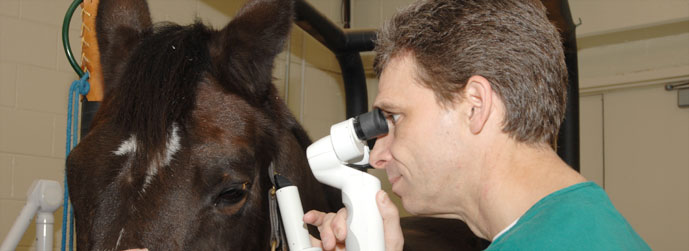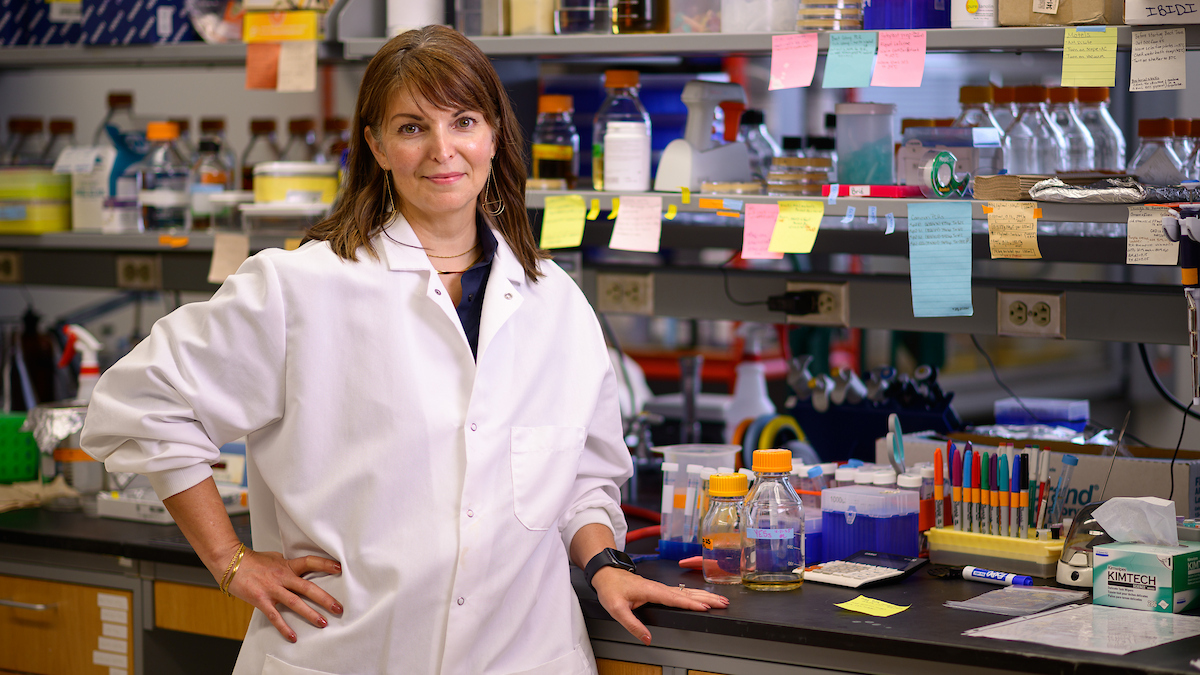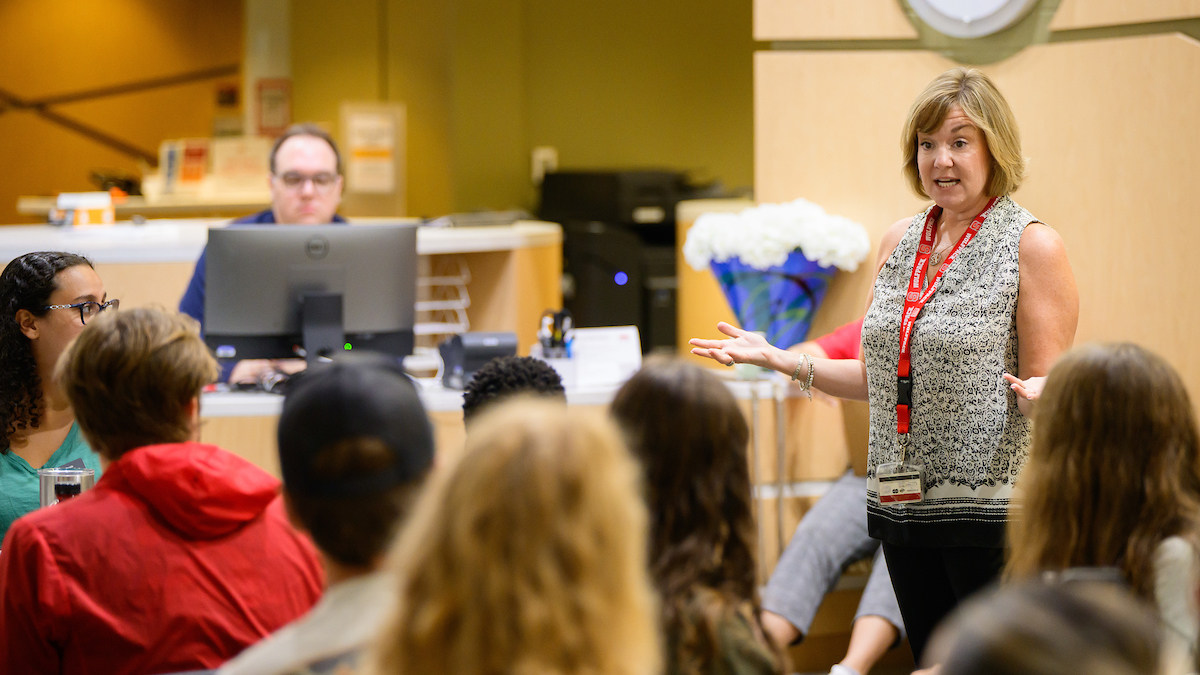Researchers Advance New Glaucoma Treatments

Nearly three million people in the United States have glaucoma and this disease a leading cause of blindness in humans. What you may not know is that glaucoma is also a leading cause of blindness in animals, especially dogs, cats, and horses.
Glaucoma is an eye disease in which the ocular pressure is abnormally high. This painful condition may result in irreversible blindness. Like people, glaucoma can occur spontaneously in certain breeds of dogs (primary glaucoma) or may be caused by cataracts, lens displacement, inflammation, trauma or certain forms of cancer of the eye (secondary glaucoma). With primary glaucoma, the drainage angle in the eye is too small, causing ocular fluid to “back up” inside the eye and raise the ocular pressure. With secondary glaucoma, the underlying disease blocks the drainage of fluid from the eye.
[section_subtitle] Breeds Predisposed to Glaucoma [/section_subtitle]
Primary glaucoma most commonly afflicts dogs at three to seven years of age but can occur at any age. The disease is most frequently seen in Cocker Spaniels, many of the terrier breeds, Poodles, Beagles, Chow-Chows, Bassett Hounds, and Dalmatians. However, primary glaucoma has been identified in nearly every breed of dog.
[section_subtitle] Effects of Elevated Ocular Pressure [/section_subtitle]
The effects of elevated ocular pressure in the dog vary with the age of the animal and duration of disease. Primary glaucoma often occurs in one eye initially, but develops in the other eye within weeks to months. Dogs with early glaucoma may only have a mild redness to the eye. Moderate forms of glaucoma cause a bluish-white discoloration of the cornea, and may cause blindness in the affected eye. It is important to understand that high ocular pressure causes irreversible damage to the retina and optic nerve in a very short period of time (24-48 hours). As a result, glaucoma is considered an emergency, and requires immediate treatment if vision is to be maintained.
[section_subtitle] Diagnosing Glaucoma [/section_subtitle]
The diagnosis of glaucoma is made by performing a complete eye exam and measurement of ocular pressure, called tonometry. Tonometry involves measuring the ocular pressure with an instrument, most commonly a TonoPen. Normal ocular pressure in dogs can range between 12 and 25 mm Hg and the two eyes should be similar in pressure.
[section_subtitle] Treatment [/section_subtitle]
The goal of treating early forms of glaucoma is to maintain a normal ocular pressure and to preserve vision. Medical treatment often involves long-term administration of eye drops, which decreases the ocular pressure. A surgical procedure, such as laser surgery, is needed to control the ocular pressure if the topical medications are not successful. Unfortunately, many forms of glaucoma are difficult to treat and have a somewhat poor prognosis for vision and comfort. Therefore, much more research is needed to improve our ability to save vision in animals with glaucoma.
New classes of anti-glaucoma drugs have been developed during the past 20 years that have improved our ability to treat this disease. The drugs are most effective when given in the early courses of the disease, or prophylactically in the normal eye of a patient who has developed glaucoma. Dogs that have been diagnosed with primary glaucoma should not be used for breeding, as this is a genetic disorder. Recently, the gene mutation causing glaucoma in Beagles has been identified and a genetic test for this mutation has been developed. Additional research will undoubtedly lead to discovering the genes responsible for primary glaucoma in other breeds.
[section_subtitle] Innovations in Glaucoma Therapy at NC State University [/section_subtitle]
Researchers at College of Veterinary Medicine and Center for Comparative Medicine and Translational Research are actively seeking methods to improve treatment of glaucoma. Dr. Brian Gilger, a Professor of Ophthalmology, is researching innovative treatment methods to replace the use of frequent eye drops in the treatment of glaucoma. His laboratory is developing sustained release medications that will allow a single treatment to last months instead of hours.
One of our new faculty members, Dr. Hans Westermeyer,an Assistant Professor of Ophthalmology, will be evaluating new medications that will improve surgical outcomes of glaucoma. Surgery to enhance outflow of ocular fluids are required in some cases of glaucoma that do not response to traditional glaucoma medications.
Dr. Mike Davidson, a Professor of Ophthalmology, emphasizes the importance of early detection, treatment, and prevention of glaucoma in dogs.
These advancements in the treatment of glaucoma will not only help veterinary patients, but also will translate to improve medical and surgical therapy for humans with glaucoma.
For more information: contact Julie Osborne janettif@ncsu.edu


